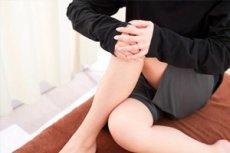New publications
Self-massage reduces knee pain with suspected osteoarthritis
Last reviewed: 02.07.2025

All iLive content is medically reviewed or fact checked to ensure as much factual accuracy as possible.
We have strict sourcing guidelines and only link to reputable media sites, academic research institutions and, whenever possible, medically peer reviewed studies. Note that the numbers in parentheses ([1], [2], etc.) are clickable links to these studies.
If you feel that any of our content is inaccurate, out-of-date, or otherwise questionable, please select it and press Ctrl + Enter.

Self-administered acupressure (SAA) is an effective and cost-effective method for relieving knee pain in middle-aged and older adults with probable knee osteoarthritis (OA), according to a study published inJAMA Network Open.
Wing-Fai Yeung, PhD, of the Hong Kong Polytechnic University, and colleagues evaluated the effectiveness of a short-course SAA in reducing knee OA pain in middle-aged and older adults (aged 50 years and older). The analysis included 314 participants randomly assigned to perform acupressure twice daily for 12 weeks or participate in a control knee health education session.
The researchers found that at week 12, the intervention group had a significantly greater reduction in the Numeric Pain Rating Scale score (mean difference, -0.54 points) and improvement in the Short Form 6 Dimensions utility score (mean difference, 0.03 points) compared with the control group. However, there were no significant differences in the Wester-McMaster Osteoarthritis Index, Timed Up and Go, or Fast Gait Speed. The probability that the intervention would be cost-effective at a willingness-to-pay threshold of 1 per capita GDP was >90 percent.
"It is noteworthy that participants demonstrated high acceptability and compliance with the SAA training program," the authors write. "Our cost-effectiveness analysis showed that SAA was a cost-effective intervention."
